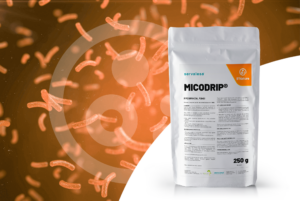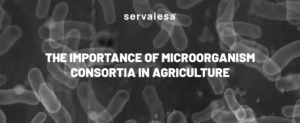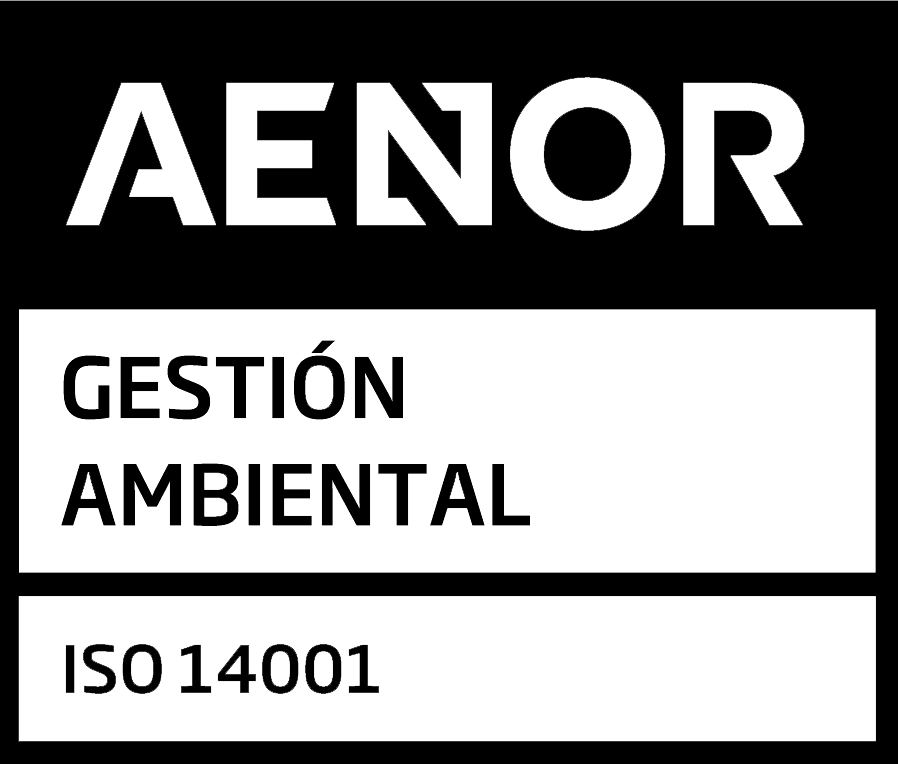Spain accounts for 35% of olive oil production worldwide and 44% at the European level. The country has 2,733,620 ha of olive groves (including olive groves for oil mills and table olives), of which only 852,227 ha are irrigated, with 68.8% of these groves (equivalent to 1,881,393 ha) being rain-fed. A large part of the irrigated olive grove is under maintenance deficit or irrigation deficit. This, together with the large amount of land under rain-fed cultivation, reflects the exposure of the crop to climatic conditions, especially the increasingly frequent
droughts and high temperatures.
For all these reasons, a strategy for working with the crop is needed to help combat the water and heat stress they suffer. For this reason, the use of biostimulants in olive groves plays a fundamental role in many aspects: alleviating the effects of stress in the plantations, helping in each
of the cultivation phases, maintaining stable production over time and avoiding crop variability or reducing or alleviating sawtooths (which are becoming increasingly pronounced, mainly due to the water and heat stress suffered by the crops).
Similarly, European agricultural production is currently in a phase of constant change in which many active substances are being phased out. They previously helped to combat numerous pests and diseases. The focus today is on much more sustainable, efficient and environmentally friendly cultivation, as well as more environmentally friendly and efficient production for end consumers. To cope with all this change successfully, the use of biostimulants is also necessary, as they help us to strengthen our plants in three main ways:
- At the cellular level
Hardening the cell wall and increasing lignification and cell thickening strengthens the natural physical barriers of the crop.
- At the nutritional level
Better-nourished plants can be achieved even in situations of extreme stress. As a result, these plants will be healthier and stronger in the face of any external attacks that may affect them.
- At the defensive system level
We stimulate, activate, strengthen and alert the plants’ internal defence system, training and alerting it. As a result, the defence system is better able to respond to this external interference, so that the plant defends itself by its own means.
For all these reasons, the use of biostimulants brings us numerous benefits in any crop and, specifically, in olive cultivation, helping to achieve a more sustainable, efficient, environmentally friendly and, of course, profitable crop for the farmer. Biostimulants are used to mitigate the effects of water deficit, increased temperatures and critical moments. More stable harvests are thereby obtained over time, combating alternating crops and maintaining levels of profitability for the farmer, even in extreme growing conditions as we have seen in recent years, especially in 2022, during which olive growing has been suffering very severely from the inclement weather.
Going into more detail on the use of biostimulants in olive groves, at Servalesa we have numerous tools that provide a multitude of benefits:
helping the farmer to achieve a more productive, less stressed, better nourished and healthier crop; making more sustainable and efficient techniques compatible, in line with the new agriculture within the current context in which we find ourselves.
The following are some of the main biostimulants used in olive cultivation:
SERGOMIL® ECO: an ideal companion for foliar treatments in the olive grove
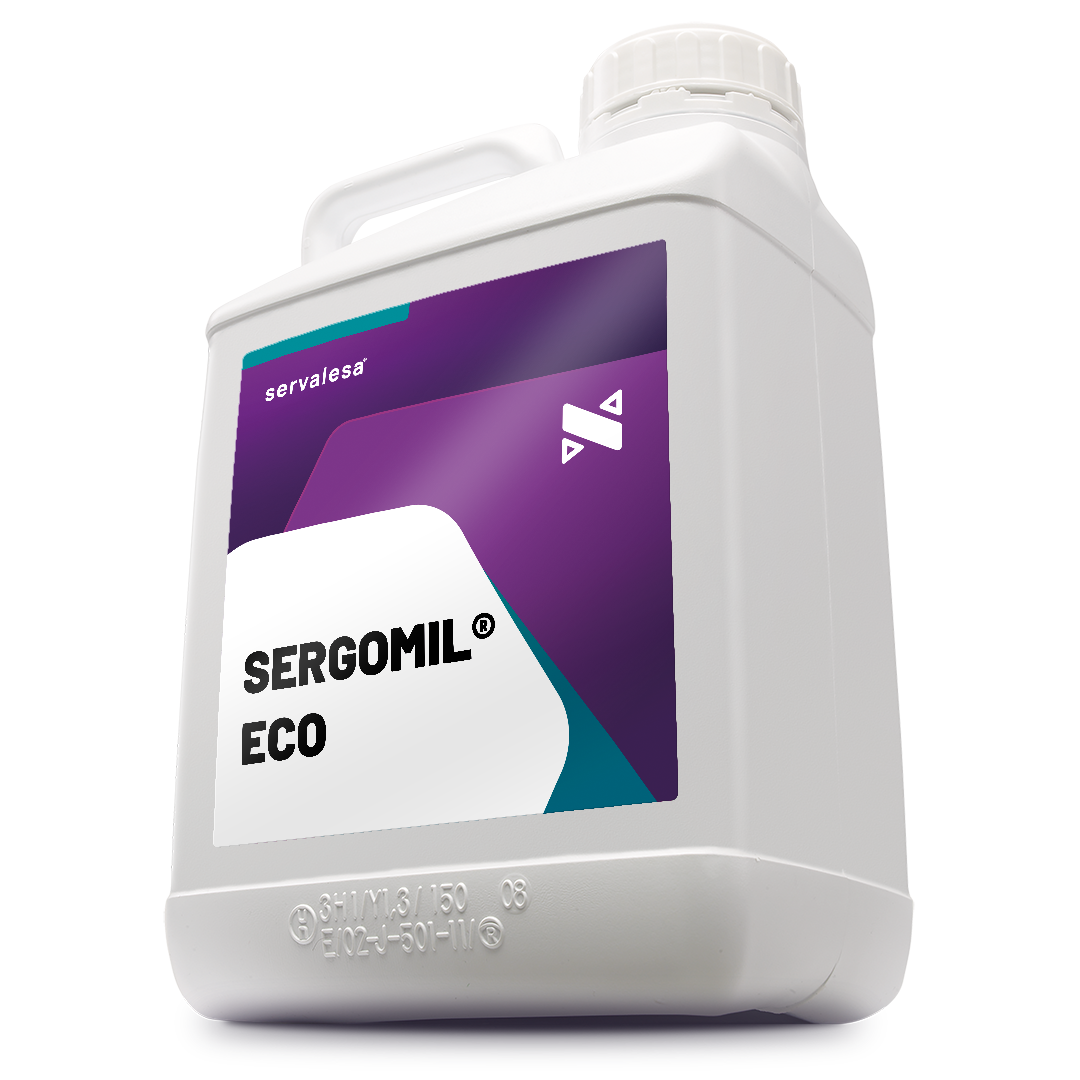
It is a biostimulant included in the Servalesa Neostimulants range due to its unique formulation. It is based on a liquid formulation composed of sucrose derivatives and complexed copper. SERGOMIL®ECO is one of the most complete biostimulants, given that it acts in three ways or on three levels of action: the cellular level, the nutritional level and the defensive system level.
To demonstrate this, Servalesa recently commissioned a study from the Zaidín Experimental Station (CSIC) which has confirmed the action method of SERGOMIL®ECO. It is based on the ability to increase copper levels inside the plant (promoting the synthesis of key enzymes), optimising the photosynthesis process and reducing the severity of pathogen attacks. However, one of the most important characteristics of the action method of SERGOMIL®ECO is its ability to activate the metabolic pathways associated with lignin synthesis, reinforcing the cell wall of plant structures and thus improving their firmness. Finally, it is worth mentioning the part of the study that tested the ability of SERGOMIL®ECO to activate the synthesis of PR proteins dependent on the salicylic acid pathway.
SERGOMIL®ECO is a multi-day product and has the greatest systemicity of any product in its category, both via the roots and via the foliage. This makes it the ideal companion in olive grove treatments, enhancing the translocation of all the elements with which it is incorporated. In addition, it avoids the stopping effect of conventional copper, which makes it ideal for spring treatments, as well as for foliar treatments in late summer or early autumn where you are seeking crop protection but do not want to encourage crop halting.
FOLSER®: increased fruit set and leaf mass
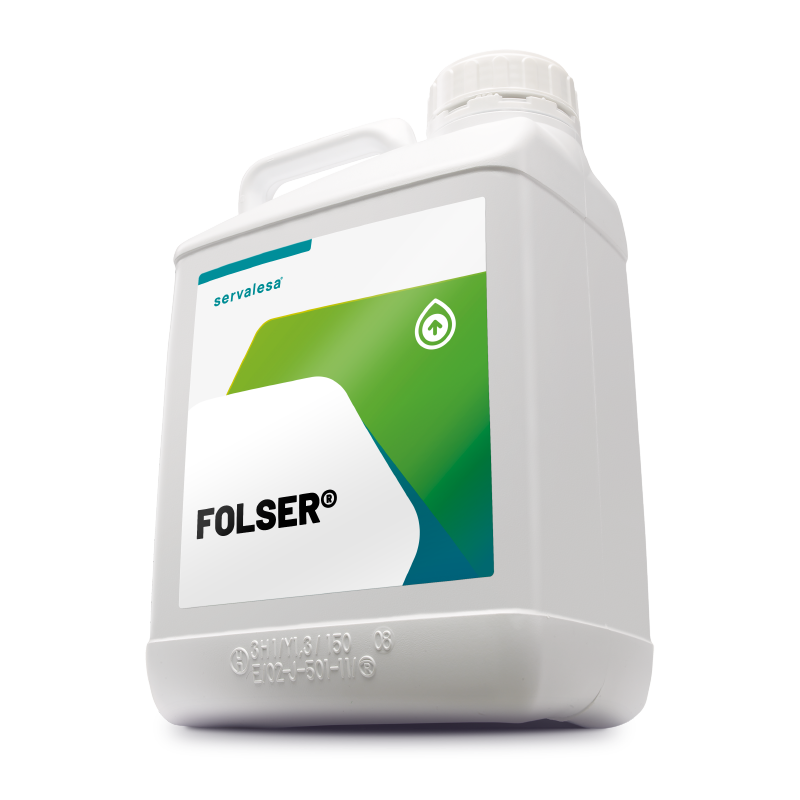
It is a cutting- edge biostimulant with an exclusive formulation composed of a vitamin extract, marine plant extracts, a balance of nutrients and growth factors developed by Servalesa. FOLSER® helps to optimise flowering and improve fruit set, as well as optimising the vigour and vegetative development of the plant.
The action method of FOLSER® is based on its capacity to stimulate and participate directly in the formation of new molecular units in the plant (amino acids, phytohormones, etc.), especially at the time of maximum demand, which coincides with flowering and subsequent fruit set. FOLSER® helps the formation of the plant’s reproductive organs and the accumulation of auxins in the flower. This accumulation helps to optimise pollen tube elongation and therefore improve fruit set.
The application of FOLSER® increases fruit set, especially in springs with irregular or adverse bioclimatic conditions and in cultivars with a low leaf mass index.
VERDEZIN® OLIVO: optimal nutrition for olive groves
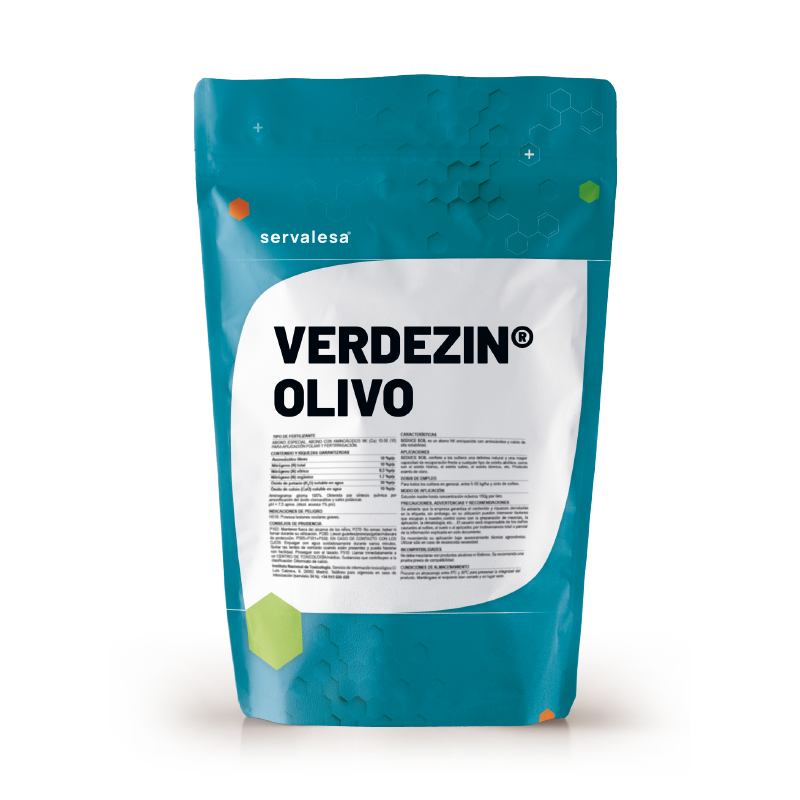
This consists of a powder formulation containing a mixture of essential cations in order to avoid the anomalies that occur when these cations are not present in the sap in sufficient concentrations, leading to deficiencies in the biosynthesis of chlorophyll,polysaccharides, polyphenols, hormones and vitamins.
VERDEZIN® OLIVO incorporates microelements that when dissolved are complexed with natural complexing agents of low molecular weight to improve their absorption, both via foliar application and fertigation, as well as their systemicity. This fact, together with the presence of surfactants, makes VERDEZIN® OLIVO a highly effective product in terms of nutritional element correction.
Its declared contents are as follows:
Water-soluble magnesium oxide (MgO) 10%
Water-soluble sulphur trioxide (SO3) 29%
Water-soluble boron (B) as sodium salt 8,0%
Water-soluble iron (Fe) chelated by EDTA 1,0%
Total water-soluble zinc (Zn), as sulphate 7,5%
VERDEZIN® OLIVO has several distinguishing features compared to other products on the market. Firstly, the raw materials that make up the formulation are of high quality, thus achieving optimal assimilation of all its elements by the plant.
The particular stand-out trait that makes VERDEZIN® OLIVO a unique product on the market is the components that co-formulate
or complement these raw materials, improving the formulation in three ways:
- Dispersing co-formulants that improve the solubility of fractions that are more difficult to dissolve.
- Stabilising and complexing agents of natural origin.
- Biostimulant agents.
The formulation of VERDEZIN® OLIVO contains organic dispersants that make it easier to put in a solution or suspension without lumps forming.
This is essential when working with a highly concentrated deficiency corrector. The main purpose of a mixture of micros and secondary elements is to make it soluble, because only soluble elements are assimilated by the plant. Contributing to dispersion and avoiding crowding is essential.
On the other hand, VERDEZIN® OLIVO is manufactured by adding two organic acids to the formulation that complement and stabilise the minerals when they are put into solution. These organic acids are always of plant origin (never synthetic) and belong to the group of what, from the point of view of plant physiology, are called phytosiderophores.
Phytosiderophores are organic compounds released by the plant to supplement nutrients (mainly iron, but also others) and absorb them. What the formulation of VERDEZIN® OLIVO purports to do is — in a way — to imitate nature in this respect. Again, it attempts
to encourage absorption without resorting to high concentrations.
In addition, VERDEZIN® OLIVE contains a small amount in the form of glutamic acid. This essential amino acid is the precursor of other elicitor-like compounds such as GABA. Glutamic acid is one of the 20 amino acids that form part of the structure of proteins and is the most abundant of them all in the plant kingdom. In turn, it is the starting point for the synthesis of the rest of the amino acids within the plant, although there are other synthesis pathways not dependent on glutamic acid.
The role of glutamic acid within plants is varied, allowing it to act in different physiological and metabolic mechanisms. The formation of glutamic acid is the entry point of nitrogen into organic compounds. Therefore, with foliar application of this compound, there is the possibility of
improving nitrogen assimilation in plants, which can be reflected in higher yields.
SERGOMAX: promotes sap flow and a balance between the aerial and root parts
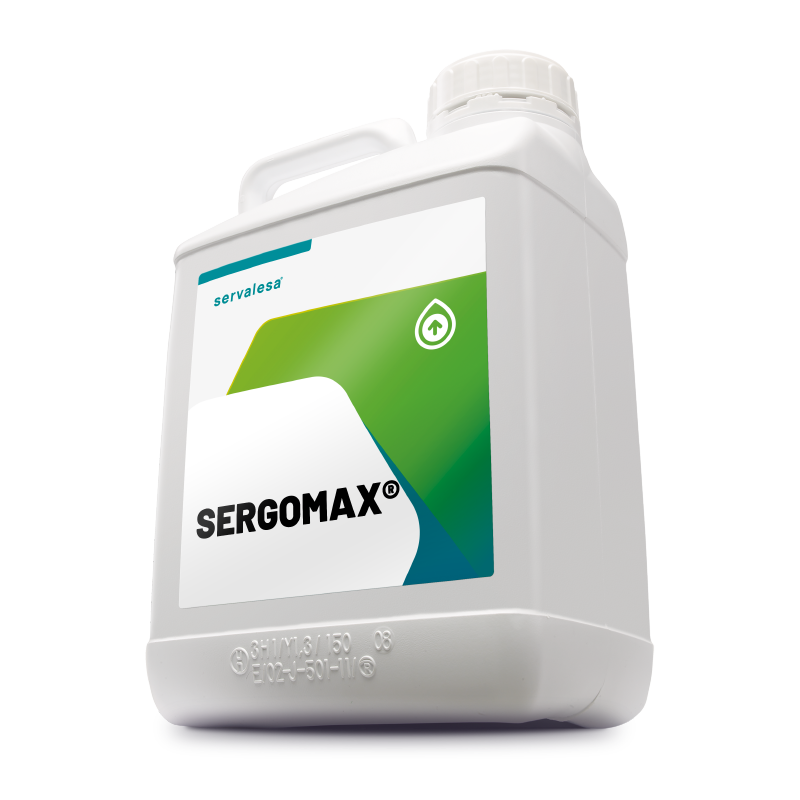
SERGOMAX® is a state-of-the-art biostimulant, with an exclusive formulation based on bioactivating molecules, derivatives of saccharides and molecular complexes of various metals (Cu, Mn and Zn). SERGOMAX® is intended to activate sap flow (after winter rest or after stressful incidents causing a vegetative standstill) and regenerates conductive vessels (xylem and phloem) while also achieving homogeneous growth and development of the different phases of the cycle.
The action method of SERGOMAX® is based on its capacity to bio-activate and induce metabolic processes in the plant to promote a strong flow of sap, generating a balance between the aerial and root parts. It also stimulates the synthesis of regenerative and antioxidant substances (such as polyphenols, phytoalexins and different types of proteins).
FEEDSER: helps to improve fruit fattening, even in times of stress due to high temperatures and maximum water stress.
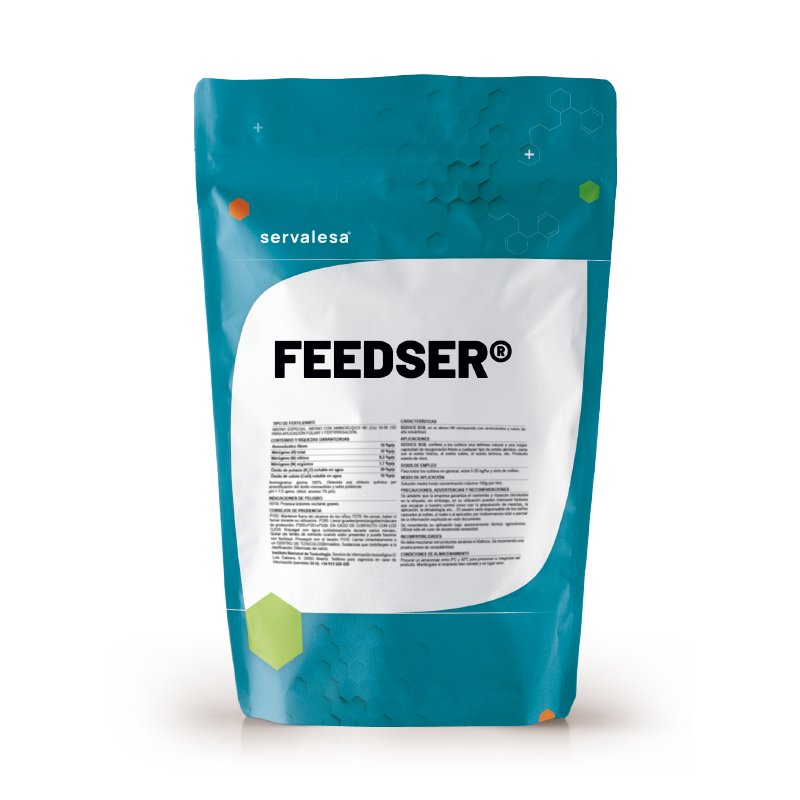
The time of maximum demand for growth, fattening and accumulation of fatty acids in the olives coincides with high temperatures and maximum water stress, both in table olives and olives for oil production. The critical moment of fruit formation and development is highly influenced by adverse climatic factors and water shortage in the crops. A specific biostimulant has been developed to help in the process of optimal development of the olive fruit, FEEDSER®. This is a cutting-edge biostimulant with an exclusive formulation composed of a concentrate of glycine-betaine, calcium, potassium and growth factors developed by Servalesa.
The action method of FEEDSER® is based on its exclusive formulation that provides the necessary elements to meet the demands of the crop in the key phase of growth, fattening and accumulation of fatty acids in the olive.
Potassium: increases tissue turgor and consistency, which predisposes the plant to cope with stressful episodes-. It is also a key element in the process of accumulation of sugars, fatty acids and amino acids metabolised in photosynthesis in sink organs.
Calcium: important element for quality improvement by strengthening the cell wall structure. Calcium also plays a role in regulating the stomata
of the crop and protects the plant against abiotic stress phenomena.
Glycine-betaine: a substance with an osmoprotective and osmoregulatory effect aimed at extending the opening of stomata at times when
the crop is under stress due to high temperatures. This achieves a greater accumulation of active plant time during this critical period and thus
helps to improve fattening and accumulation of fatty acids in the fruit.

